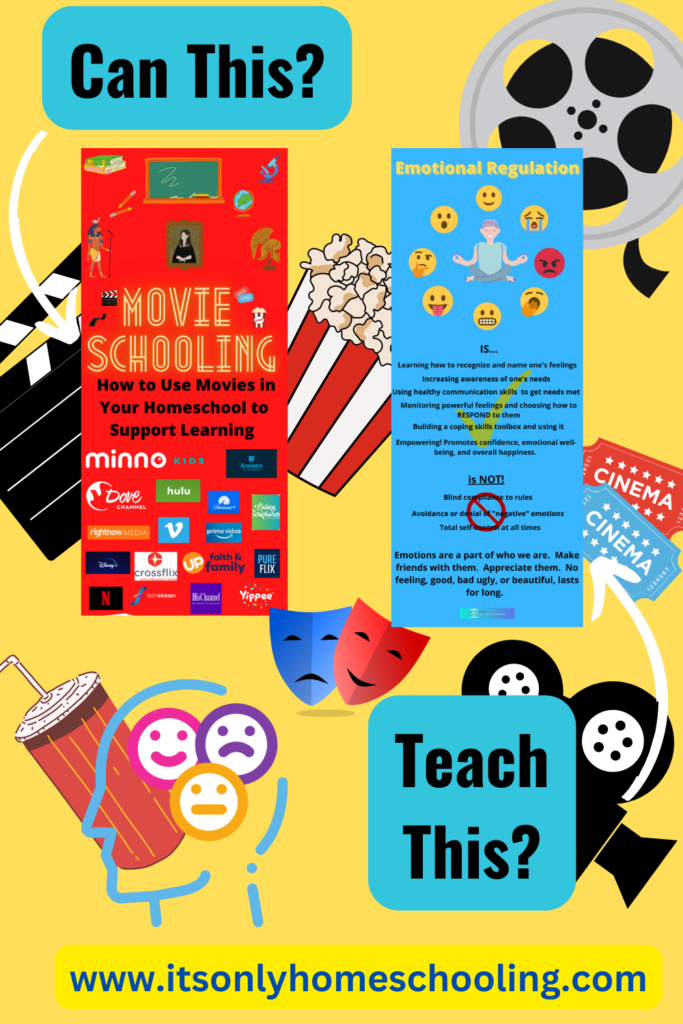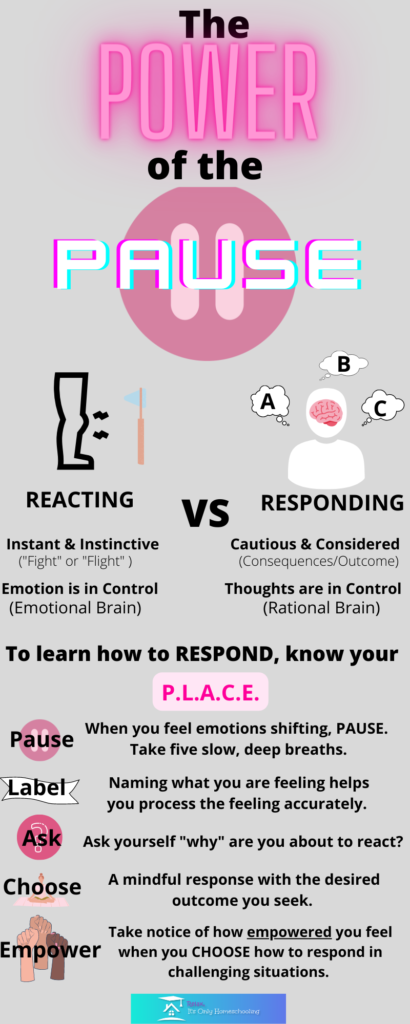Can You Use Movies to Help Teach Emotional Regulation?

Emotional Intelligence
Feelings.
We all have them.
Many are wonderful. Others, not so much. And some, are quite painful.
As adults, we have the benefit of life experience to guide us through the murky waters of powerful emotions. Children, however, have less life experience and require guidance to grow in their management of emotions.
Recognizing, understanding, and managing one’s own emotions as well as understanding, interpreting, and responding to the emotions of others are all components of emotional intelligence. Emotional intelligence strengthens our relationships, promotes academic and vocational success, prevents bullying, and promotes overall general well-being and happiness.
While researchers debate whether the capacity for emotional intelligence is innate or learned, evidence exists to support its cultivation.
Emotional regulation begins with self-awareness and grows in maturity with practice.
All the Feels
Movies can elicit ALL the feels.
In our house, we are Disney fans. While most Disney movies ride the roller coaster range of emotions, there is one movie in particular that makes emotions the STAR – Inside Out.

Emotions are complex creatures that tend to take on a life of their own. And anything alive will fight to the death to survive. They can emerge without warning and change like the wind. They laugh in the face of logic. They warn us of threats. They foster affection and help us build bonds with our fellow humans.
Sometimes they remind us of a teething, hangry toddler in desperate need of a nap.
As a therapist, a big part of my job is teaching clients how to tolerate emotions. (Yes, I said tolerate, NOT control. There is a reason we have anger management classes NOT anger control classes.)
We cannot enforce limits on our emotions. Feelings just are. We CAN, however, control what we DO with our feelings (our behavior).
Teaching emotional tolerance to younger audiences requires the same strategy as teaching any other abstract concept. You make the concept tangible. Not necessarily concrete because quite frankly, emotions are anything BUT simple.
Disney’s Inside Out has accomplished such a goal. It introduces young (and young-at-heart) audiences to the inner workings of the limbic system (the main area of the brain that is involved with emotions and memories).


[SPOILER ALERT]
For kids struggling with emotional regulation, Inside Out can be a powerful tool. First, it helps provide an emotional vocabulary beyond the basic “good” and “bad” feelings. In the form of adorable avatars, we now have tangible representatives of Anger, Disgust, Sadness, Joy, and Fear.
Next, it teaches that all feelings have value. Sadness and anger, while unpleasant to experience at times, can protect. Joy, when manifested as denial in disguise, can harm.
It also helps younger audiences establish a connection between experiences and feelings. At the beginning of the film, we are introduced to “memory” spheres. As the main character’s (Riley’s) life experiences become memories, orbs are generated from each memory. These orbs are then color-coded and cataloged, yellow for joy, blue for sadness, red for anger, green for disgust, and purple for fear, respectively.
Furthermore, it teaches that feelings are complex. As the movie progresses, the audience’s understanding of life experiences deepens and the colors of the orbs are no longer singular. For example, as two of the emotional avatars, Joy, and Sadness, wrestle over a memory sphere, the main character Riley also struggles with processing her feelings associated with said experiences. In the end, we see the orbs morph from single-color spheres to multi-layered globes.
Finally, the movie teaches children they can tolerate their emotions. No feeling, pleasant or unpleasant, hangs around forever. With practice, we can learn to recognize and respond to our feelings rather than give knee-jerk reactions to them. Responding empowers us and builds our self-esteem.

Share Your Experience
While normalizing the experience of emotions, teaching emotional regulation, and cultivating emotional intelligence is one way to use movies as a teaching tool in home education, the possibilities with this medium are endless.
What are some ways you have used movies as a teaching tool in your homeschool? We’d love to hear about it in the comments section below!

Let’s Keep In Touch
Be sure you do not miss a blog post by signing up for my email list, liking my Facebook, Twitter, or Instagram pages, or subscribing to my YouTube channel.
Have a heart for service and love podcasts? Check out our It’s Only Homeschooling Podcast presents the Salt & Light SERVE Spotlight. Each month we feature a different community outreach program. We hope to bring awareness to the good works of these amazing organizations and encourage support.
You can listen to podcast episodes on YouTube, Podbean, Spotify, iHeartRadio, Samsung, PlayerFM, or right here on our website.
Are you a homeschool parent looking for encouragement from other homeschool parents in the trenches? Then check out our latest podcast series, Shelf-Indulgence Book Chats. In this series, we chat with some amazing authors who also happen to be homeschool moms of faith. New episodes will premier the first Wednesday of every month on the It’s Only Homeschooling YouTube Channel.
Like what you see here? Sharing is caring!
Blessings,
Kimberly
IOH Mom
This website is not a professional counseling website and nothing here should be construed as professional counseling advice. Although Kimberly Bennett, LPC is a Licensed Professional Counselor, she is not your counselor, and no counselor-client relationship is established unless she has signed an agreement with you. All information provided through this website is for informational and educational purposes only. This post may contain affiliate links. Please read my disclosure statement. Thanks for visiting!
